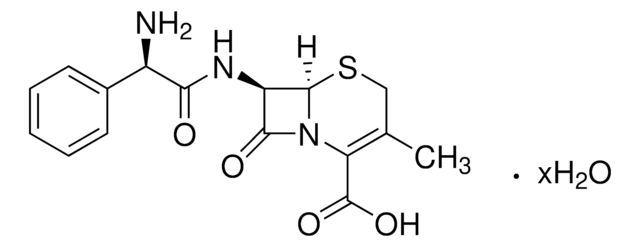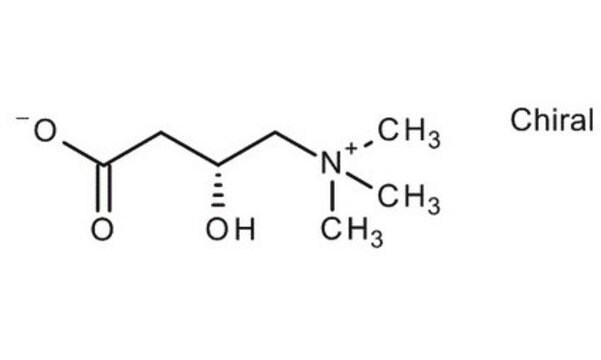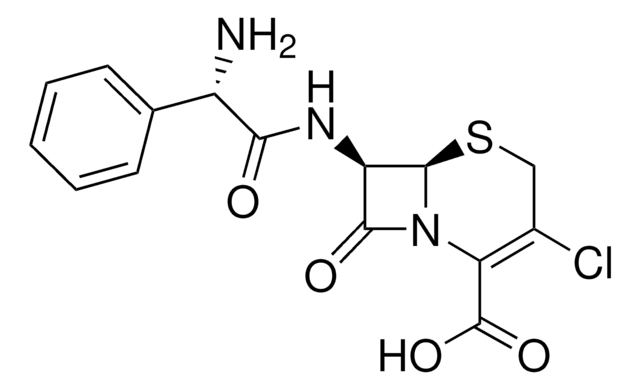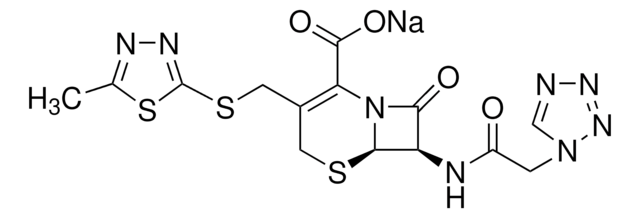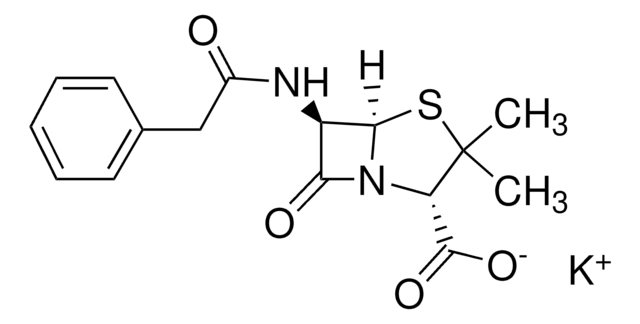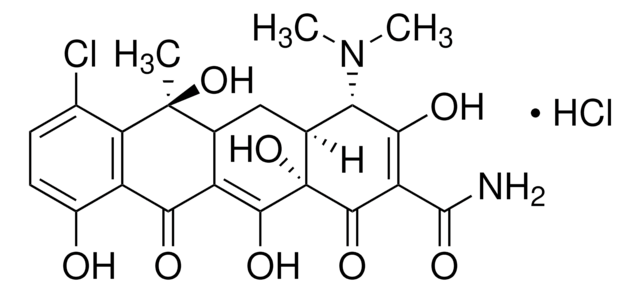Kluczowe dokumenty
C8395
Cephradine
≥90.0% (Cephradine, HPLC)
Synonim(y):
Cefradin
About This Item
Polecane produkty
Poziom jakości
Próba
≥90.0% (Cephradine, HPLC)
Formularz
powder
rozpuszczalność
ethanol: practically insoluble 96%
hexane: practically insoluble
water: slightly soluble
spektrum działania antybiotyku
Gram-negative bacteria
Gram-positive bacteria
Tryb działania
cell wall synthesis | interferes
temp. przechowywania
2-8°C
ciąg SMILES
[H][C@]12SCC(C)=C(N1C(=O)[C@H]2NC(=O)[C@H](N)C3=CCC=CC3)C(O)=O
InChI
1S/C16H19N3O4S/c1-8-7-24-15-11(14(21)19(15)12(8)16(22)23)18-13(20)10(17)9-5-3-2-4-6-9/h2-3,6,10-11,15H,4-5,7,17H2,1H3,(H,18,20)(H,22,23)/t10-,11-,15-/m1/s1
Klucz InChI
RDLPVSKMFDYCOR-UEKVPHQBSA-N
Szukasz podobnych produktów? Odwiedź Przewodnik dotyczący porównywania produktów
Opis ogólny
Zastosowanie
Działania biochem./fizjol.
Inne uwagi
Hasło ostrzegawcze
Danger
Zwroty wskazujące rodzaj zagrożenia
Zwroty wskazujące środki ostrożności
Klasyfikacja zagrożeń
Eye Irrit. 2 - Resp. Sens. 1 - Skin Irrit. 2 - Skin Sens. 1 - STOT SE 3
Organy docelowe
Respiratory system
Kod klasy składowania
11 - Combustible Solids
Klasa zagrożenia wodnego (WGK)
WGK 2
Temperatura zapłonu (°F)
Not applicable
Temperatura zapłonu (°C)
Not applicable
Wybierz jedną z najnowszych wersji:
Masz już ten produkt?
Dokumenty związane z niedawno zakupionymi produktami zostały zamieszczone w Bibliotece dokumentów.
Klienci oglądali również te produkty
Nasz zespół naukowców ma doświadczenie we wszystkich obszarach badań, w tym w naukach przyrodniczych, materiałoznawstwie, syntezie chemicznej, chromatografii, analityce i wielu innych dziedzinach.
Skontaktuj się z zespołem ds. pomocy technicznej



